Fall is here and while many are celebrating the influx of cooler temperatures, that same seasonal change can lead to an influx of pests into your home. Though this time of year is notorious for its increase in rodent and wildlife activity inside homes, there is another pest that is likely to be inviting itself to be your house guest this holiday season: wasps.
Though we often associate wasps with the threat they pose to our outdoor summer fun, these pests create an entirely additional problem in the fall. For most wasps, the fall is their time for procreation. This is the time when male and queen wasps are produced and mate, leading to greater wasp activity. As the season gets colder, the fertilized queens will seek shelter, often in and around houses, to hibernate till the spring, when they will emerge and create their nests, often in the same locations as the previous year. This means that the fall is the time when wasps are essentially staking out their future nesting sites, and any that decide to call your house their winter home are likely to be the worst kind of house guests: the kind that never leave.
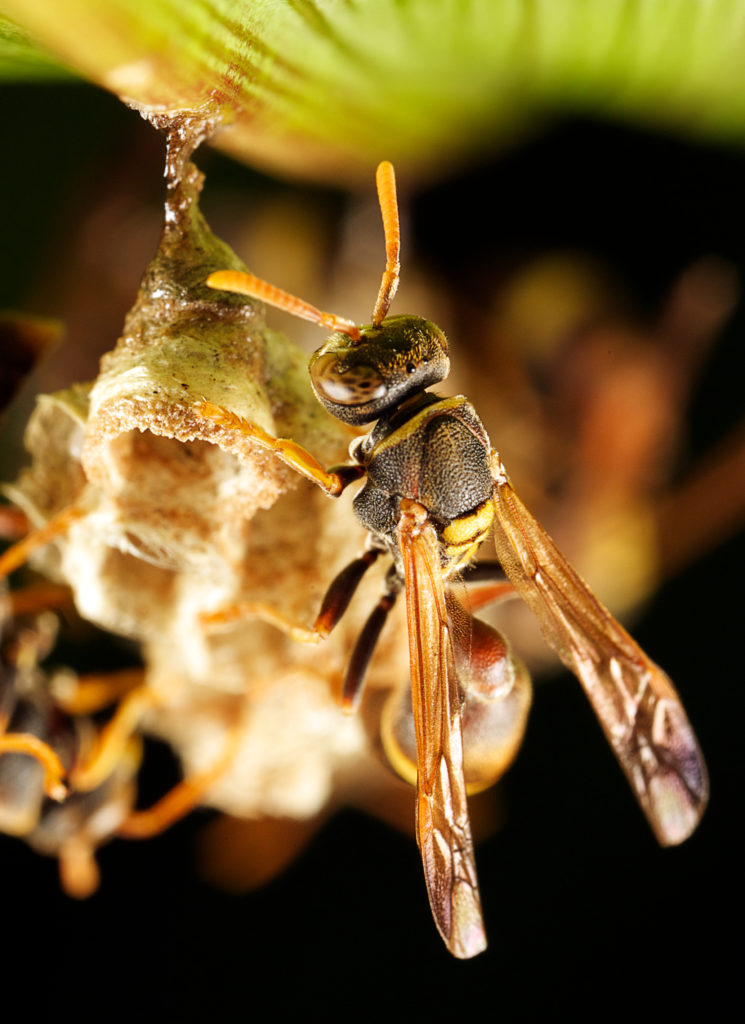
What Kind of Wasps are in Texas?
Though there are quite a few types of wasps that call Texas home, there are five kinds that are exceptionally common throughout the Dallas-Fort Worth metroplex. These five are: paper wasps, yellowjackets, hornets, cicada killers, and mud daubers. All five of these varieties have distinctive appearances and habits, but can be generally broken down into two categories: social wasps and solitary wasps.
Social wasps are the most common group of vespid wasps, living in nests that are built and defended by the colony. They use their stinger primarily as a defensive tool to protect both their nest and the colony in general. This category encompasses paper wasps, yellowjackets, and hornets.
Solitary wasps are generally found in much smaller numbers than social wasps as they do not create community nests. This lack of a community nest also accounts for the solitary wasps’ significantly decreased likelihood to sting a person. Their stinger isn’t needed to defend a colony, since they don’t have one, and as such is primarily used to subdue prey. The cicada killer and the mud dauber are the most common types of wasp in this category.
Though both types of wasps can sting, social wasps pose a far greater threat than solitary wasps.
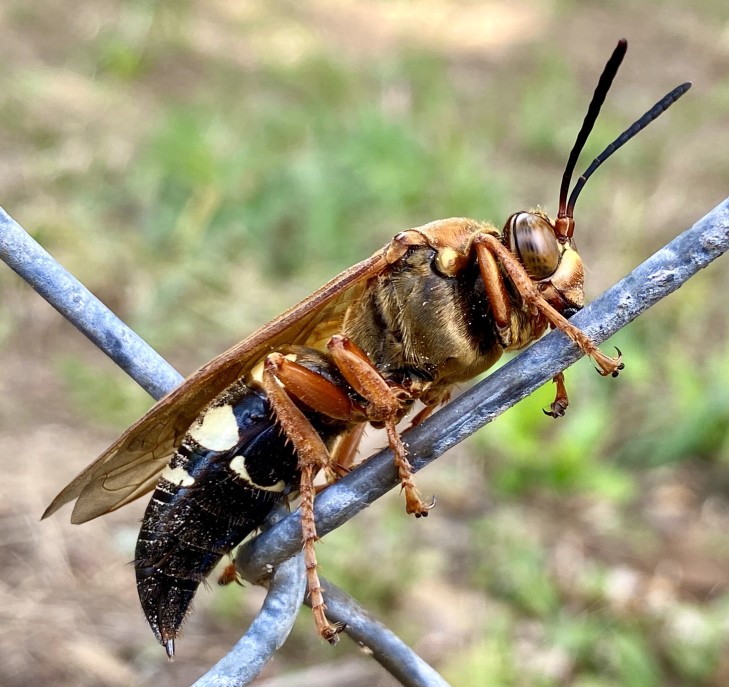
What do Wasps Look Like?
Wasps come in a variety of shapes, sizes, and colors, and tend to be brighter and have less hairy bodies than bees.
Paper wasps are between 3/4” and 1” long, are reddish-orange to dark brown, and have yellow body markings.
Yellowjackets are between 1/2” and 3/4” long and have alternating yellow and black stripes/markings across their body.
Baldfaced Hornets are approximately 3/4” long, and black and white in color, and has a primarily white head. These are also the only true hornet in Texas, with the term often being incorrectly applied to any type of wasp.
Cicada killers are very large wasps and are around 1.5” long, have a red rust-colored head, thorax, and wings, and have yellow and black stripes on the abdomen.
Mud daubers are between 3/4” and 1” long and are either dull black with bright yellow markings or an iridescent blue-black. They also have longer and slenderer waists than most wasps.
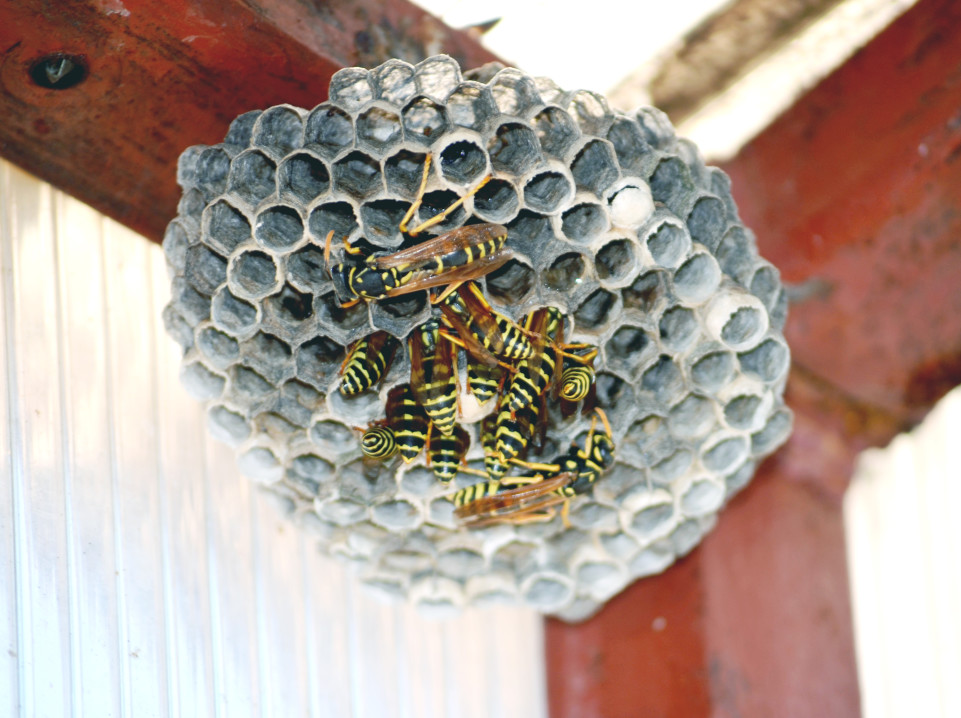
What do Wasp Nests Look Like?
Wasp nests can vary almost as much as the wasps themselves, from tiny to large, and from in the ground to in the air.
Paper wasps create uniquely shaped nests out of chewed wood fibers. Their nests hang from a single filament and consist of a single tier of hexagonal-shaped cells with the comb pointing downward; the shape of the nest is a bit like an upside down umbrella. These nests are generally found in protected areas like under the eaves of a house, in attics, sheds, shrubs, or trees. Each nest can contain around 30 adult wasps.
Yellowjackets create their nests from a paper-like material that is made of wood fiber. These nests are complete enclosed except for the entrance hole, and can vary in size from a few inches to over 6 feet! Unsurprisingly, one of these nests could house up to 20,000 wasps. These nests can also be found in both subterranean and aerial locations: from gardens and flower beds to trees, eaves, and even inside wall voids.
Baldfaced Hornets make round or pear-shaped nests that are gray to brown in color and have a entrance near the bottom. These nests, which can grow up to 3 feet long are generally found high above ground in trees, though are sometimes seen on eaves as well. One nest can house up to 400 wasps.
Cicada killers make their nests in lawns where they dig galleries to lay their eggs and feed their young. The creation of these nests has been known to damage lawns and gardens. The nests generally house only 1 adult wasp and their offspring.
Mud daubers make small tube-like nests out of mud, as their name suggests. These nests are generally found under eaves or in attics. The nests generally house only 1 adult wasp and their offspring.
What do Wasps Eat?
Though there is variation in exact diet depending on the type of wasp, most consume insects and spiders. Some wasps, like yellowjackets, also gather and feed on nectar and honeydew. It is for this reason that wasps can be particularly attracted to sweets and be a troublesome pests for outdoor recreation.
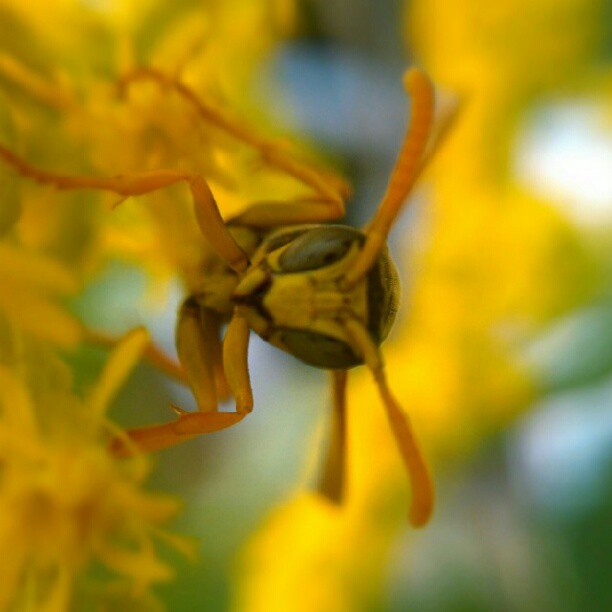
Are Wasps Dangerous?
Not only are wasp stings painful, they have the potential to be fatal. Generally, a wasp sting results in intense pain and creates redness and swelling in the area around the sting. For most people these symptoms will last for a bit and then subside, but for others they can grow into a systemic allergic reaction that can lead to severe swelling and pain lasting for days, and in some cases can lead to an anaphylactic reaction. The most dangerous stings are the ones to the head, eyes, and neck, and any time there are multiple stings in short succession.
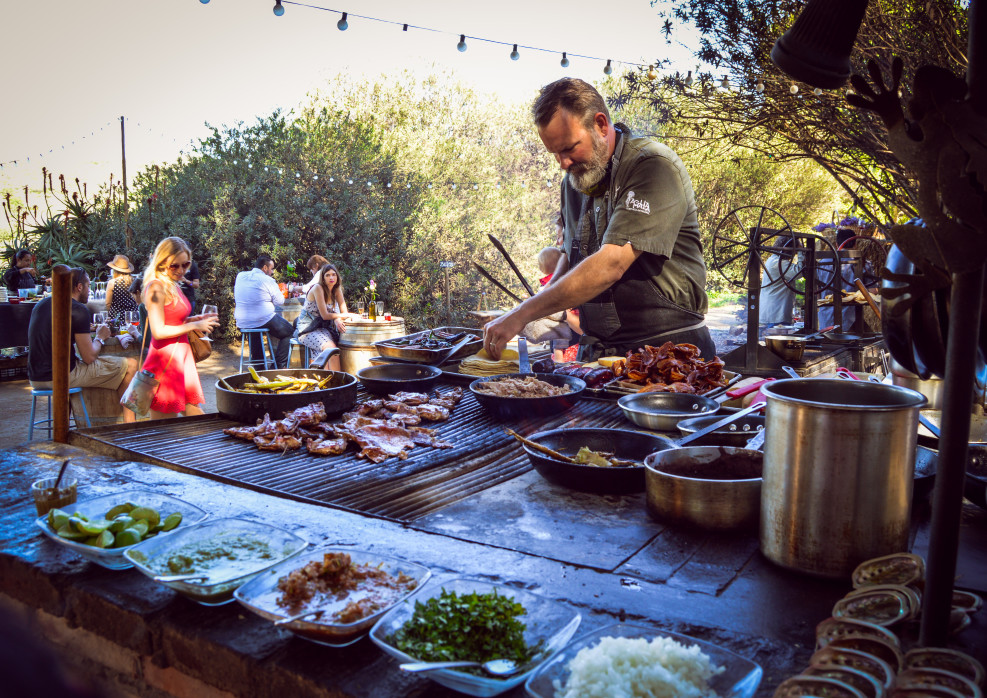
How do you Prevent Wasps?
Though it’s impossible to prevent wasps from getting onto your property, there are steps you can take to make it a less hospitable place for them to call home.
- Maintain regular pest control (give The Bug Dude a call at 1-800-310-BUGS (2847) to see what service plan would be best for you) to keep insect populations near your home low; this will limit the food sources available to the wasps and will also increase the likelihood of a technician discovering a wasp nest before it gets out of hand.
- Remove food sources from around your home. A few examples are ripe fruits and hummingbird feeders.
- Seal any noticeable cracks and crevices around porches and eaves that wasps could use to get into your home.
- Tightly seal all garbage cans.
- Immediately pick up any food trash and clean up any food/drink spills that may happen during outdoor recreation.
How do you Eliminate Wasps?
Wasps do not like to be disturbed, and are at their most dangerous when their home is being threatened. This is why it’s always best to call The Bug Dude at 1-800-310-BUGS (2847) to handle any wasp issues, as our technicians have the experience and the equipment to treat the issue while keeping themselves and your family safe. This fall, don’t let wasps ruin your holiday time by making themselves at home in your house. If you see evidence of wasps on or near your house, give Mid-Cities Pest Control, Inc. a.k.a. TheBugDude.com @ 1-800-310-2847 a call and let us help keep this season about an abundance of thanks, not an abundance of pests.
Further Reading:
“Paper Wasps, Yellowjackets and Solitary Wasps” – Glen C. Moore and Mike E. Merchant – AgriLIFE EXTENSION – Texas A&M System
“Mud Daubers” – Texas Apiary Inspection Service (TAIS) – Texas A&M AgriLIFE Research
“Cicada Killer Wasps” – Lee Townsend, Extension Entomologist – University of Kentucky College of AgricultureAuthor Bio: Alissa Breach has been gaining knowledge and experience around pest control concerns over the last 11 years while working for Mid-Cities Pest Control. She has a creative writing BA from UW-Madison and is always pursuing new and interesting writing projects
Photo Credits:
@kammiesavidge
@countess_anne
@thonyguillen
@osoconfuzed




